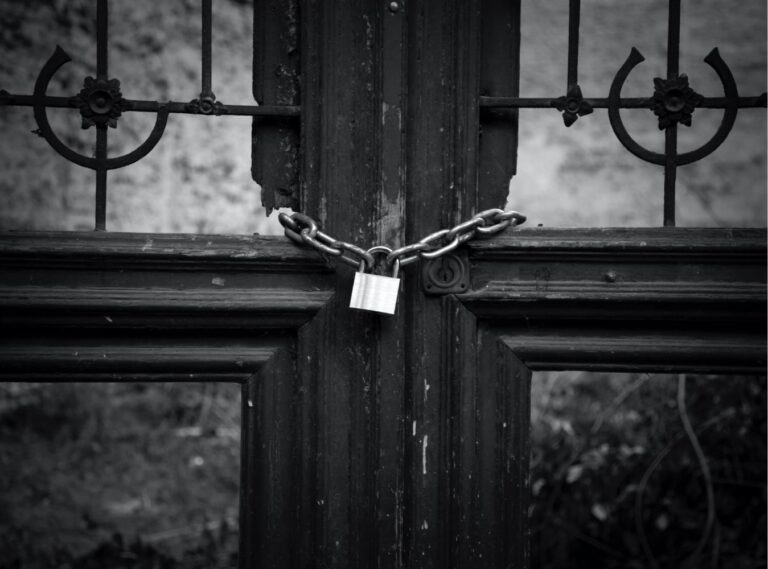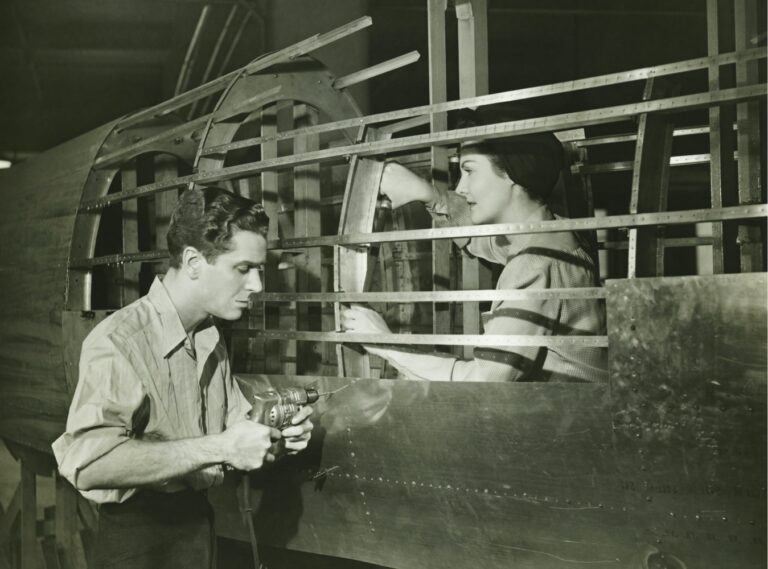The History of Human Resource Management
100 Years of Crises

Is coronavirus HR’s greatest challenge?
Let’s Find Out
When the world changes, the workplace does too — and HR is always on the frontlines.
From keeping employees safe to reimagining what company culture means for remote workers, HR is one of the most important jobs in the world right now. But facing big challenges isn’t new for HR. It may seem like this current pandemic is the greatest talent management crisis ever, and maybe it is, but we thought it would be interesting to put COVID-19 in perspective.
This visual timeline displays 100 years of human resource management challenges.
- 1910: The birth of modern HR amid labor unrest and the great depression
- 1950: Title VII bringing the fight for civil rights to the workplace
- 1960: The clash of generations as baby boomers’ expectations meet reality
- 1980: Globalization and the age of technology forcing HR to adapt just to keep up
- Now: And now COVID: how will HR respond to an unprecedented pandemic?
1910-20s
Labor Unrest
Workers fight to end terrible working conditions
At the close of WWI, as Europe lies in ruins, America is entering a period of untold prosperity. But unenlightened businesses want to keep the profits for themselves, while workers toil in factories that have barely improved since the Victorian era.
Terrible labor conditions bring 350,000 steel workers out on strike in 1919. Three years later, 400,000 railshop workers walk out over a pay cut of 7 cents per hour.
The union movement will soon be quashed, but workers want a better deal, and that desire isn’t going away.

The idea of “Human Resource Management” is born
A few forward-thinking companies begin to realize something that will become obvious decades later: employees are motivated by more than just money
Benefits, job security and participation plans—these will be commonplace in the future, but in the 1920s they represent a whole new approach to employer and employee relations.
Progressive companies like Kodak and Procter & Gamble see these methods as a way to win employee loyalty and motivate using the carrot not the stick.
It doesn’t last long but this movement, known as ‘Welfare Capitalism’, may be (if you squint a little) the first appearance of something close to HR as we know it today.

1930s
The Great Depression
Record-high unemployment leads to breadlines in the street
On October 29, 1929, the roaring twenties run smack into a brick wall. On ‘Black Tuesday’, the stock market loses $14 billion in one day—and then keeps falling.
In the devastating aftermath, unemployment reached 25%, entire industries collapse and the Dust Bowl sends 400,000 ‘Okies’ to seek a new life out west in California.
‘Welfare Capitalism’ is over—even progressive companies abandon positive labor policies in their fight against bankruptcy.

HR goes dark—but there are seeds of hope
In the most unlikely of circumstances, Elton Mayo develops a theory that will change the way we define work …
HR seems doomed. Departments are shuttered. The ones that stay open get a bad rap: they are seen as doing the dirty work of business.
But at Hawthorne Works, a Western Electric factory in Illinois, Elton Mayo is completing a study that will give HR newfound purpose.
Mayo’s experiments recognize workers as complex people (actual humans!), greatly affected by the structure of the organization around them.
His discoveries will evolve into concepts we celebrate today, like work-life balance, company culture and employee engagement.

1940s
World War II
To win the war, we have to solve the mother of all talent shortages
The surprise attack on Pear Harbor on December 7, 1941 thrusts America into a war it can’t afford to lose.
The government demands 60,000 new aircraft within a year, and 125,000 the year after that. It is perhaps the largest “purchase order” in history: they want weapons, ammunition and army supplies, and they want it all yesterday.
America needs to turn into an economic powerhouse overnight. But with millions of troops going off to actually fight the war, who will do the work?

Rosie the Riveter comes to HR’s rescue
They say necessity is the mother of invention. It takes a world war, but women jump to the front line…
Suddenly, women become streetcar conductors, electricians, welders and, yes, riveters. In the aviation industry, women go from 1% of the workforce pre-war to 65% by 1943.
It isn’t a smooth transition (especially for minority women) and the story will turn sour when the war ends, and troops come home demanding their old jobs back.
But the war wouldn’t have been won without women, and this experience fuels the fight for workplace equality.

1950s/60s
The Fight for Civil Rights
MLK leads fight to end discrimination—and the workplace is a battleground
America is the leader of the free world, but not every American citizen gets the same opportunity, or even the same basic civil rights.
Women get paid 2/3rds on the dollar. African Americans are systemically disenfranchised in ways big and small.
The Civil Rights era is a whirlwind of radical change and growing protest. The battles are fought everywhere, including in the workplace.

HR puts Title VII into action
You can legislate all you want, but it takes HR to make the change happen at work…
Visionary civil rights leaders, the passion of young people and the heroic struggle of reformers lead to a seismic cultural and political shift.
To pave the way toward equal opportunity employment, the government passes landmark legislation: The Equal Pay Act of 1963 and the Civil Rights Act of 1964—Title VII.
But that is only half the battle. Discrimination is banned on paper, but it’s HR’s responsibility to make it a reality.

1960s/70s
The Growing Clash of Generations
Baby Boomers enter the workforce—and they aren’t like their parents
If you think managing multiple generations is tough today, you weren’t alive in 1968.
The old guard have experienced the great depression and served in the war—and now it’s their time to be in charge.
Then along come the baby boomers, who’ve grown up protesting war, fresh from college and with a whole lot of opinions.
They seems like two different species, and before they can work together, they first have to find a way to communicate.

HR holds the workplace together
HR’s new mission: persuading a multigenerational workplace to get along.
How can the baby boomers’ disruptive energy and dreams of “self-actualization” sit alongside a generation who learned everything they knew about authority and management in the armed forces?
The solution: give the young upstarts what they want—more say in decision making, regular feedback and an increased focus on learning & development.
The good news is, it works. These measures boost productivity, keeping those in charge (the older generation) happy. The modern workplace has arrived—and HR has a big role to play.

1980s/90s
Globalization and the Information Age
To keep up with a complex new world, businesses need help
At some point in the late 20th century, the future arrives.
Computers become mainstream, and the internet goes from a quirky message board to an essential business tool.
Suddenly, the world is smaller—but competition is bigger. There are opportunities, but only for those who can adapt.
The challenge is how to stay competitive in a new business reality while motivating employees who no longer have the job security they had in the decades before.

HR Technology goes mainstream
The first HRIS systems are created, while the war for tech talent heats up…
HR might’ve had an impossible task. Luckily, it can now make use of the emerging breed of firms offering HR technology—one of these is Paycor, founded in 1990.
With new tools, HR can get to work on big projects like initiating organizational learning programs and innovating benefits structures to increase retention.
In the tech industry itself, HR leads the way on recruiting—doing whatever it takes to find the skills that are in such high demand.

2000s/10s
The Financial Crisis
Unemployment soars and the ‘gig economy’ rewrites the rules of work
We all watch in horror at the crises unfolding one after another: first subprime mortgages, then the banks and finally the entire global financial system.
It becomes a fight to survive and HR knows what that means. But unlike previous downturns, HR has become an established part of the organizational furniture—can HR now be part of the solution, rather than pushed aside?
And how will businesses react to a labor market transformed by the gig economy?

HR learns to work smarter
Software does the heavy lifting, so HR teams can be more strategic—and impact the bottom line…
HR does suffer cuts but, this time round, it doesn’t disappear. Instead, new software advances mean HR teams can play a bigger role than ever helping businesses get through the crisis.
The key concept is optimization. Smarter scheduling tools mean more efficient labor costs are possible, while businesses work to boost productivity with a more strategic approach to employee engagement.
With the ‘gig economy’ rising, HR begins to consider offering more flexible working solutions within organizations.

Now
COVID
Amid a global pandemic, HR is responsible for keeping employees engaged—but also safe
HR professionals don’t get into the industry for the crises, but that’s where they tend to shine. In a matter of months, HR has lead the way:
- Moving millions of employees remote and equipping them for success
- Keeping teams engaged and informed
- Transforming workplaces to minimize risk
Now we’re planning for the future: how do we continue to keep employees safe? What should benefits look like in this new reality? Is going virtual realistic and, if so, how do we keep company culture alive?

How will HR rise to the challenge?
The world of work is waiting to be reimagined…
A century ago, when the Spanish flu tore across the globe, killing close to a million Americans, HR didn’t exist, let alone have the power to make real change.
Things are different today. Through decades of boom and bust, HR has learned hard lessons, grown in stature and been at the forefront of change—for business and society.
COVID may or may not be HR’s greatest challenge (that’s for you to decide) but one thing’s certain: HR has never been better placed to make a difference.

Paycor is With You
If you’re an HR professional, everyone depends on you. Who do you depend on? Paycor. We’ve been listening to and partnering with business leaders for 30 years, so this isn’t our first crisis either. Paycor knows what leaders need:
First, get out of the weeds.
Our core HR software solution is seamless and helps you get work done.
Next, solve problems.
Think of Paycor’s HCM platform as a concierge—it helps you solve problems and achieve your goals.
Now, grow your business.
To scale, your platform must adapt to change in your industry and in the marketplace. Paycor’s HR & Payroll solution is constantly enhanced, as we’re always listening to and acting on feedback from more than two million users.










